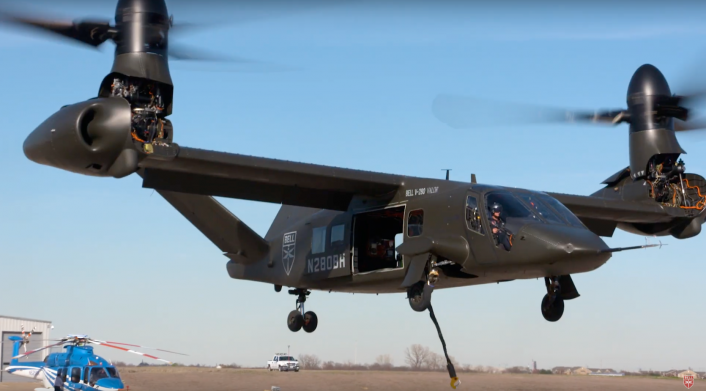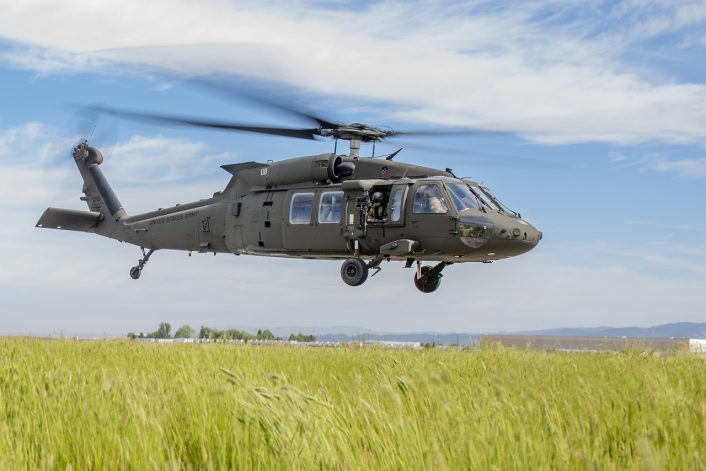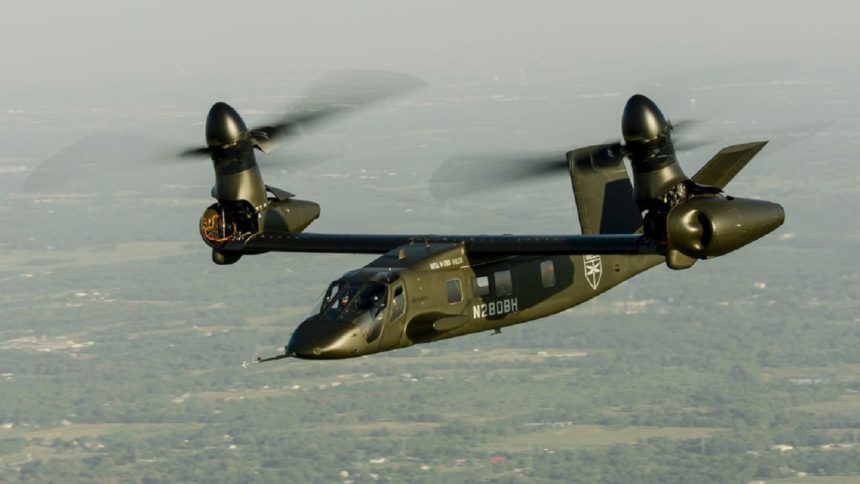With the achievement of the Milestone B, the FLRAA program now moves into the engineering and manufacturing development phase and becomes a Program of Record.
The Future Long Range Assault Aircraft (FLRAA), the U.S. Army’s new tiltrotor, is now a Program of Record (PoR) after the service has approved the Milestone B decision. The Bell V-280 Valor, which won the competition for the Army’s new helicopter in late 2022, will now move into the Engineering and Manufacturing Development (EMD) phase.
With the Future Armed Reconnaissance Aircraft (FARA) program cancelled earlier this year, FLRAA becomes the only Future Vertical Lift (FVL) platform to move into the EMD phase. In a press release on Aug. 2, 2024, the Army said the decision came after the successful FLRAA preliminary design review in April and a meeting of the Army Systems Acquisition Review Council (ASARC) in June.
“After reviewing FLRAA affordability, technological viability, threat projections and security, engineering, manufacturing, sustainment and cost risks, the ASARC confirmed that all sources of program risk have been adequately addressed for this phase of the program,” added the service.
“This an important step for FLRAA and demonstrates the Army’s commitment to our highest aviation modernization priority,” said the Army acquisition executive, Douglas R. Bush. “FLRAA will provide assault and MEDEVAC capabilities for the future Army, adding significantly increased speed, range and endurance.”
The Army mentioned in the press release that the contract awarded to Bell in 2022 includes nine options. The Milestone B allows the Army to exercise the first option which includes detailed aircraft design and build of six prototype aircraft.
According to the Army, the first FLRAA prototype is planned to fly in 2026, while the Low-Rate Initial Production is scheduled to start in 2028. The service plans to field the first tiltrotors in 2030, taking over the roles of the UH-60 Black Hawk. While the final number of FLRAA aircraft is not known, it will not replace on a one-to-one basis the Army’s 2,000 Black Hawks.
“This significant milestone is made possible by the years of hard work and sacrifice by Team FLRAA and our teammates throughout the Army and the Department of Defense,” said COL Jeffrey Poquette, FLRAA Project Manager. “We are poised to deliver a truly transformational aircraft for the Army. The hard work continues into the Engineering and Manufacturing Development Phase where we will design, build and test FLRAA prototypes. It is certainly an exciting time for the program.”

The Future Long Range Assault Aircraft
The award of the Future Long Range Assault Aircraft (FLRAA) contract in 2022 represents the U.S. Army’s largest helicopter procurement decision in 40 years. The award was the result of the competition between the Bell V-280 Valor and the Sikorsky/Boeing Defiant X.
The Army initiated the FLRAA program in 2019 as part of its Future Vertical Lift initiative to replace a portion of its assault and utility helicopter fleet. The FLRAA is intended to eventually replace the UH-60 Black Hawk helicopter, which has been in service for more than four decades.
The FLRAA program will expand the depth of the battlefield by extending the reach of air assault missions and enabling ground forces to converge through decentralized operations at extended distances. The Army, in fact, required FLRAA to be capable, among all things, of traveling roughly 2,440 nautical miles without refueling, in addition to being agile enough to safely maneuver troops into dangerous hot spots.
“FLRAA will provide transformational capability for ground forces and aircrews with speed, range, and surprise to present multiple dilemmas to the enemy,” says the Army. Operating further away, quickly and unpredictably, and maintaining some distance from threats have been demonstrated in real world events to be among the most important capabilities right now.

The V-280 Valor
The V-280 Valor tiltrotor was first developed and tested as part of the Joint Multi-Role Technology Demonstrator (JMR TD) program that began in 2013. The V-280 progressed through design, manufacturing, and more than three years of rigorous flight testing that provided extensive data validating the technical and operational advantages of the aircraft for the long-range assault mission.
Before Bell retired its flight demonstrator in June 2021, the V-280 flew more than 214 hours and demonstrated low-speed agility and long-range cruise capabilities, as well as a maximum 305-knot cruising speed. Five Army experimental test pilots have flown at the commands of the V-280 during 15 sorties, according to Bell, and their feedback, together with the ones from operational pilots, mechanics and infantry squads, was used to inform design plans.
During a media roundtable in 2022, Bell told us that tiltrotor technology is considered a leap ahead for the Army’s requirements and will give the service relevance and opportunity especially over the long distances in the Pacific region. This will also open the Army to new possibilities to gain a competitive advantage in multidomain operations.
Bell pitched the V-280 as a third-generation tiltrotor, succeeding the second-generation Bell-Boeing V-22. A notable difference in the design of the two types is the V-280’s fixed engine nacelle, compared to the V-22’s nacelles that tilt along with its rotors. The company said this design will reduce manufacturing costs and provide better performance, maintainability and sustainability.
The aircraft is not being designed around a specific theater, according to the company, but it’s designed around reach, survivable range, speed and convergence of effects. Also, Bell says that Valor will be able to perform all the mission sets of the Black Hawk with the same footprint and the same infrastructure, including sling loading and urban operations.









